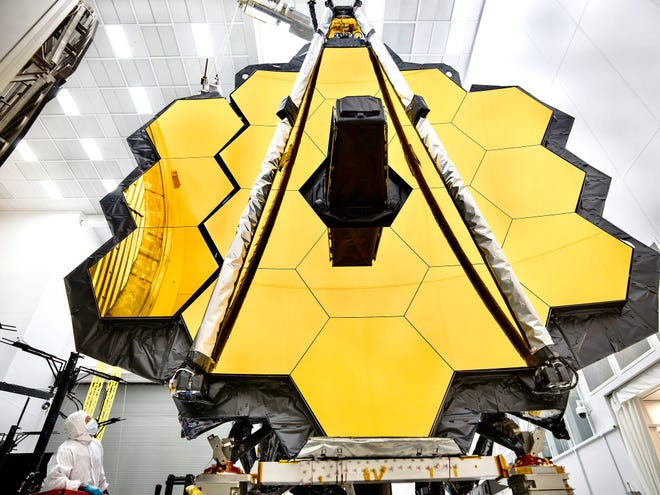Galaxies from a few hundred million years after the Big Bang found – Columbia Daily Tribune

A team of astronomers led by University of Missouri professor Haojing Yan discovered 87 very early galaxies using images from the James Webb Space Telescope.
The galaxies are from about 200 to 400 million years after the Big Bang — the start of everything — which current knowledge understands to have taken place 14 billion years ago, Yan said.
“These galaxies formed a tiny, tiny fraction of time after that,” Yan said.
The James Webb Space Telescope has only been operating a few months, but already is making breakthrough discoveries, Yan said.
“It’s going to be revolutionary,” he said.
The galaxies were discovered in a very small patch of sky, Yan said.
The galaxies were discovered using their redshift, referring to the light waves they emitted. Distant objects emit a red wavelength, Yan said.
“By measuring the change of color, I can know that it’s moving away from us.”
The telescope records the images as they were in the distant past, he said.
“The speed of light is finite,” Yan said. “It takes time to reach us.”
These early galaxies, which Yan called “candidate galaxies,” are very different from mature galaxies like our own Milky Way, he said.
While the Milky Way has close to 100 billion stars, it only forms two to four new stars a year, Yan said.
The early galaxies have at most 100 million stars at most and are actively forming new stars.
“They really have no shape,” Yan said of the early galaxies.
They’re more of a blob than a spiral like the Milky Way, he said.

Yan, speaking by phone on Friday, had just returned from Seattle, where he presented the research at the American Astronomical Society. There also was a news conference, he said.
The James Webb Space Telescope already has identified an exoplanet and can view very early in the time of the universe.
“James Webb already allows us to do a lot more than ever before,” Yan said. “We are basically making breakthroughs at every front.”
The research was published in The Astrophysical Journal Letters, with co-authors from the University of Massachusetts-Amherst, the Chinese Academy of Sciences South America Center for Astronomy and National Astronomical Observatories of China.
Roger McKinney is the Tribune’s education reporter. You can reach him at rmckinney@columbiatribune.com or 573-815-1719. He’s on Twitter at @rmckinney9.






